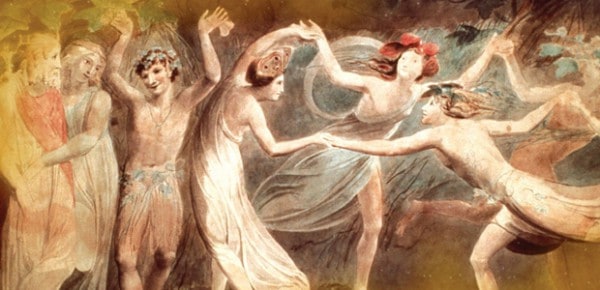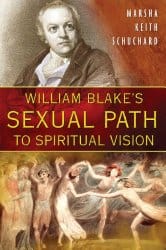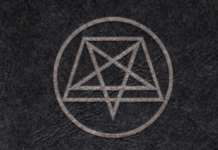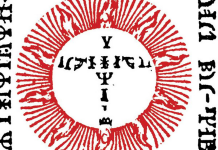

William Blake’s Sexual Path to Spiritual Vision, by Marsha Keith Schuchard
Inner Traditions, 9781594772115, 398 pp., 2008
Reading William Blake one cannot help but realize this is a man who is both religious and spiritually active, especially his poems known as the prophecies. The question is what was the nature of his spiritual life? What inspired Blake to create works that are both heavily Christian and at the same time antagonistic to many Christian ideals? The surprising answer is laid out as Schuchard leads us back into the complex religious web of mystical Christianity of the 17th and 18th century.
No clear, singular document exists that explains Blake’s religious life and upbringing, so Schuchard researched and wrote this text as a “reconstruction of the lost religious history of the family of William Blake.”1 This area is rarely investigated, and considering how bizarre and complicated a picture Schuchard paints it’s not surprising that “sensible academic critics have cautiously refrained from taking the plunge”2 into this counter-religious culture.
After a very brief introduction into William Blake and his life and works Schuchard begins laying the background information for Blake’s upbringing. This section takes up just under 40% of the entire book and does not even mention Blake, it’s dealing with the religious and political climate of the time, how different sects, teachers, and philosophies interacted and grow. This is a large portion of the text, but it is necessary to really understand what inspired Blake. Granted, she could have cut to the chase and said “a mixture of Swedenborgian, Moravian, Qabalistic, and Yogic beliefs,” but it would not have been as nearly satisfying an answer.
From there the book shifts into a biography on Blake, it deals with Blake’s family life, religious life, his training as an artist (and a mystic), and his marriage, which all flow back and forth. What made this section compelling was even with all that earlier background, you could still see that Blake’s “tradition” was not complete or static, and we are led through it and how it changed as he grew, even into his 60s.
Content wise, I must admit how much this book surprised me. As someone with an English/History degree, who spent years studying Blake and mystical Christian traditions I was surprised to find a sect I was unfamiliar with. I was also intrigued to find evidence of attempts to synthesize the kabbalah and Tantric yoga existing in the 17th century. It turns out that Blake was part of a Christian movement that saw sex as profoundly holy, and arguably sacred in a way no other earthly thing could be. Sex was a means to connect with and see God and all that is holy. It was also a group, to get your curiosity going, that identified the side-wound on Christ from the spear, as Jesus’ vagina,3 and for a sect that believes in sacred sexuality, that is an interesting concept to run with. It was great to see a write up of this tradition that was foreign to me,
Process-wise Schuchard has done a great job with what evidence there is. Some of her assertions would be difficult to argue, others are more speculative based on circumstantial evidence, but she makes a good case for these connections. When reading the book you have to keep in mind this is sometimes how history works, sometimes there are gaps, but you can jump them if your arguments are solid and the logical conclusion can be reached. Do not be put off by the numerous “Blake might have” and “could have” statements, this is how historical speculation and deduction is done. Schuchard draws on sources ranging from Church records, religious pamphlets, letters, and of course the works of William Blake himself. As someone with a history degree, I was pleased to see how well she documented her research; it was always evident where her information was coming from.
The writing itself is the only place where this book is really lacking. The content and research are very well done, but the delivery is very dry, and occasionally confusing. While it is not unreadable, if you are not used to reading academic papers or texts, it might be hard to get through.
If you’re a William Blake fan, or even just curious about the subtle mystical sexual undercurrents in Christian Europe at the time, this is a great book for you. It will not teach you Blake’s path or his methods, and as a man who said “I must Create a System, or be enslav’d by another Man’s” regarding spirituality that’s not surprising, it is not a how-to text by any means, but as an academic resource of Blake’s sexual spiritual tradition, it is an excellent book well worth the read.








